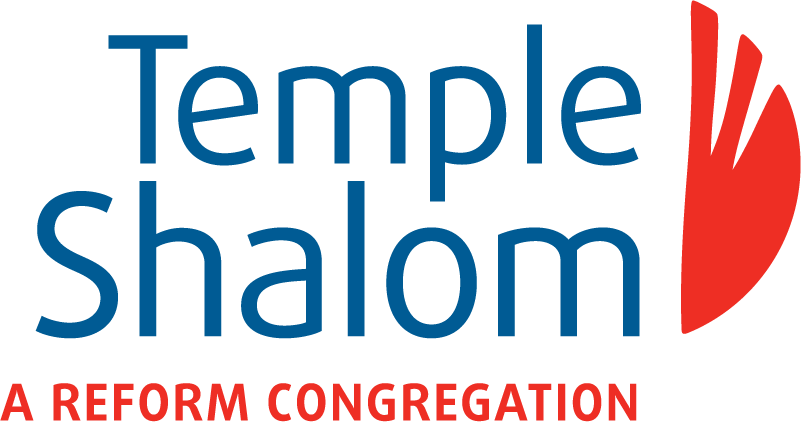Excerpt From Book by Allan Levine
COMING OF AGE: A History of the Jewish People of Manitoba
Chapter 12: Go South, Young Jew pp 421-424
AT THE OTHER END of the religious spectrum, the small congregation of one hundred families at Temple Shalom, Winnipeg’s only Reform synagogue, has generally gone about its business without becoming embroiled in the Jewish community’s politics. In larger centres in the United States and in Toronto, Reform Judaism has attracted many more worshippers. …Jewish Winnipegers, on the other hand, brought up in Orthodox or Conservative families, have tended to remain at the synagogues their families first belonged to – or at synagogues within the same branch of Judaism.
They also generally regard Reform Judaism with mild scorn – or as Abby Morris sarcastically observed, “like treif” (unkosher food) though attitudes have probably moderated further in the past decade. The synagogue has also faced increasing competition from Shaarey Zedey Synagogue, which has adopted a more liberal and accommodating approach, including the full participation of women in its services. At Temple Shalom, on an average Friday evening Oneg Shabbat, the synagogue attracts forty people, though many more attend Cantor Len Udow’s special music services, held every two months and there are more than 200 present on the High Holidays.
Beginning in the mid-sixties, Temple Shalom first held its services in the homes of members, then for many years at the Viscount Gort Hotel, and later at a renovated house on McMillan Avenue. The synagogue found a permanent home in a renovated church at the corner of Wilton and Grant Avenue. Its first two rabbis were Jerry Steinberg, a Winnipegger, and American Eric Silver.
In 1986, the synagogue hired as its rabbi Tracy Guren Kliers, the first woman to head a synagogue in Manitoba’s Jewish history. She returned to New York City two years later, however and was replaced by Rabbi Jeffrey Gale, who stayed for ten years. For more than two decades, lawyer Richard Yaffe had acted as Temple Shalom’s cantor and choir director but resigned both positions as a result of a contract dispute in June 1998.
The congregation next found a leader in Rabbi Michael Levenson, who had a master’s degree in English literature from the University of Toronto and had spent time on Gabriola Island, near Nanaimo, B.C., learning about Chinese and holistic medicine. In short, he was not your ordinary Winnipeg rabbi. He had worked with the dean of Canadian Reform rabbis, Gunter Plaut at Holy Blossom Temple in Toronto, as well as at Reform synagogues in New York and Chicago. He had some success in building up memberships at his Chicago synagogues and believed he could do the same with Temple Shalom.
“Reform is growing in Canada, but not in Winnipeg,” he said in a Jewish Post & News interview soon after he arrived in Winnipeg. He planned to change that. In late 1998, the Temple Shalom board agreed to his request that he be permitted to perform same-sex marriages as well as mixed marriages (between a Jew and a non-Jew.)
Approximately thirty per cent of the synagogue’s members were in interfaith marriages and twenty per cent were married to a non-Jewish spouse who had converted. In mid-January 1999, Levenson publicly announced his intention to perform same-sex and mixed marriages, setting off an emotionally charged debate.
During the next few years, Levenson officiated at many marriage ceremonies for mixed and same sex couples. At the end of 2002, however, Temple Shalom could no longer afford to keep a full-time rabbi on staff and was forced to let him go. Rabbi Levenson retired and stayed in the city for several years. He died in Jerusalem in September 2008.
The synagogue and its congregation carries on, practising an all-inclusive form of liberal Judaism that (unlike the Orthodox and Conservative tradition) recognizes paternal descent. Its members celebrate bar- and bat-mitzvahs, sing Hebrew prayers and songs, rejoice in everything Judaism has to offer.
In October 2007, Temple Shalom had no choice but to open its own chevra kadisha for tending to the bodies of the dead. The community owned Chesed Shel Emes could not accommodate intermarried couples or perform religious rituals on bodies that were buried at Chapel Lawn, an interdenominational cemetery.
“It is not in keeping with what goes on in most of North America, says Huebner. “In most cities if a Jewish family wants someone prepared for burial, a majority of Jewish funeral funeral homes will do it and they don’t pay attention to what happens to the body once it leaves their home.” In Winnipeg, the community is more conservative in the political and religious sense of the word.
